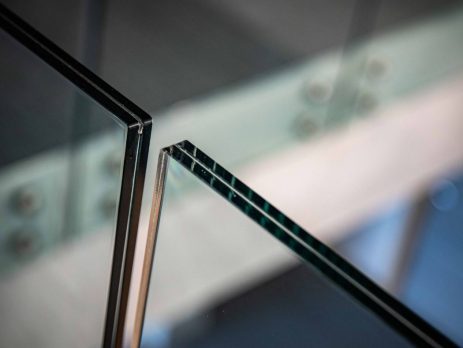Glass Balustrade Safety Measures: Ensuring Compliance and Peace of Mind
Introduction:
Glass balustrades add a touch of sleekness and modernity to various architectural designs. However, it is of utmost importance to prioritize safety when incorporating these elegant structures into your space. This blog post aims to guide you through essential glass balustrade safety measures and regulations, ensuring compliance and providing peace of mind.
Safety Measures for Glass Balustrades:
Glass balustrades not only enhance the visual appeal of a space but also contribute to its safety. By implementing the following safety measures, you can ensure the integrity and stability of your glass balustrades.
1. Regular inspections and maintenance: Conducting routine inspections is crucial to identify any signs of damage or wear. These inspections help address structural issues promptly, such as cracks or loose fixings. Implementing a maintenance schedule will assist in keeping your glass balustrades in optimal condition.
2. Appropriate glass thickness: The thickness of the glass used in a balustrade plays a vital role in its strength and durability. To determine the suitable glass thickness based on the specific application and load requirements, it is advisable to consult professionals or relevant standards. This ensures that your balustrades can withstand the expected forces.
3. Use of laminated or toughened glass: Opting for laminated or toughened glass significantly enhances the safety of glass balustrades. These types of glass are designed to reduce the risk of breakage and minimize the potential for injury in case of breakage. Choosing laminated or toughened glass provides an added layer of security for occupants.
4. Proper installation techniques: The safety of your glass balustrades can be compromised by improper installation. It is crucial to follow manufacturer guidelines and engage experienced professionals for the installation process. They will ensure correct installation, including the proper use of fixings and adhesives, maximizing the stability and safety of the balustrades.
5. Ensuring structural integrity: The stability of glass balustrades depends on the structural integrity of the supporting framework. Before installation, it is essential to verify that the framework can withstand the loads and forces imposed on the balustrade. This step is vital for preventing accidents and ensuring the long-term safety of the structure.
6. Handrail installation and height regulations: In many jurisdictions, the installation of handrails alongside glass balustrades is mandatory. Handrails provide additional support and safety, particularly for individuals with mobility challenges. To comply with local regulations, ensure proper handrail installation, including adherence to correct height and spacing requirements.
Regulations for Glass Balustrades:
Understanding and adhering to relevant regulations and standards is crucial for the safety and compliance of glass balustrades. Familiarize yourself with the following regulations to ensure your installations meet the required guidelines.
1. Building codes and standards: Local building codes provide guidelines for construction and safety requirements. To understand the specific regulations for glass balustrades, consult the relevant building codes in your area. These codes may include specifications on materials, design, installation, and maintenance.
2. Glass strength requirements: Balustrade glass must meet specific strength requirements outlined by regulations or standards. These requirements ensure that the glass can withstand anticipated loads and forces without failure. Choosing glass that complies with these strength requirements is essential for the safety and durability of your balustrades.
3. Height and spacing regulations: Regulations may specify minimum and maximum heights for balustrades to prevent accidental falls. Height requirements ensure that the balustrade provides a sufficient barrier. Spacing regulations determine the maximum gap between glass panels or balusters to prevent the passage of small children or pets.
4. Load-bearing capacity: Glass balustrades must be designed and constructed to bear anticipated loads without failure. Regulations may provide guidelines on the load-bearing capacity of the balustrade, considering factors such as occupancy, location, andintended usage. It is crucial to ensure that your balustrades are engineered to meet these load-bearing requirements, ensuring safety and structural integrity.
5. Safety glazing requirements: Safety glazing regulations outline the specifications for glass used in balustrades to minimize the risk of injury upon breakage. These requirements often involve the use of laminated or toughened glass. Safety glazing ensures that if the glass does break, it will not shatter into sharp, dangerous shards, reducing the risk of harm to occupants.
6. Accessibility regulations: In certain settings, such as public buildings or commercial spaces, accessibility regulations may apply to glass balustrades. These regulations aim to ensure that individuals with disabilities can safely and conveniently navigate the environment. Accessibility requirements may include specific dimensions, handrail provisions, and other features to accommodate people with mobility challenges.
By familiarizing yourself with these regulations and implementing the necessary safety measures, you can ensure that your glass balustrades not only enhance the aesthetics of your space but also provide a secure and compliant solution. Prioritizing safety and adhering to regulations will give you peace of mind and create a welcoming environment for occupants.
Conclusion:
In conclusion, glass balustrades offer a modern and sophisticated touch to architectural designs. However, it is vital to prioritize safety when incorporating them into your space. By following the recommended safety measures, such as regular inspections and maintenance, appropriate glass thickness, use of laminated or toughened glass, proper installation techniques, ensuring structural integrity, and compliance with regulations, you can ensure the safety and compliance of your glass balustrades. Remember, a well-designed and secure glass balustrade not only adds aesthetic value but also provides peace of mind for everyone using the space.



